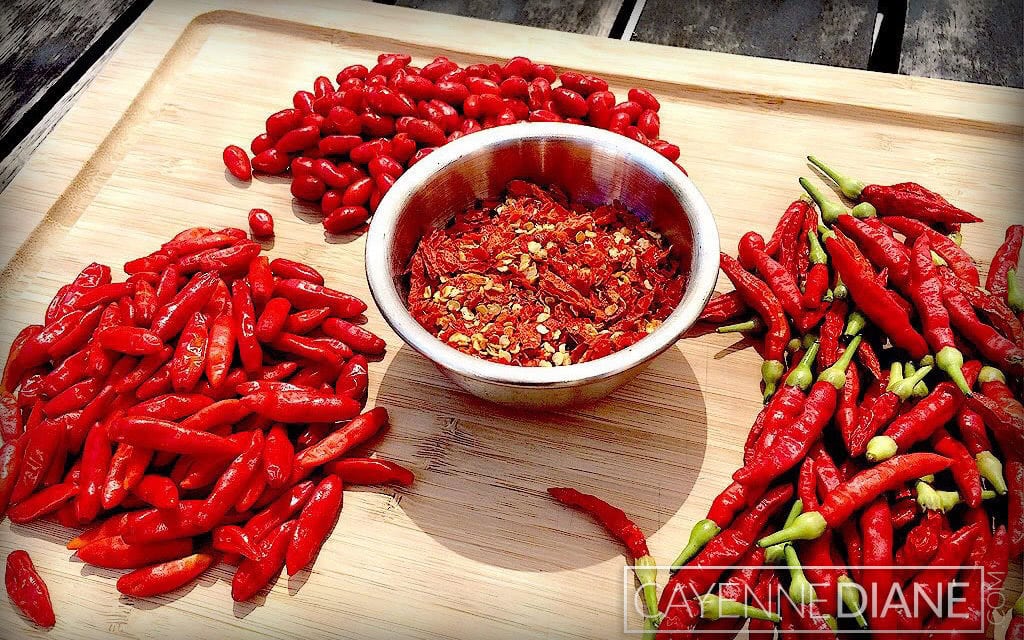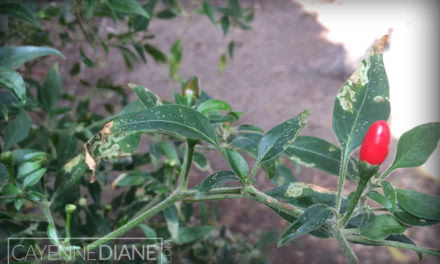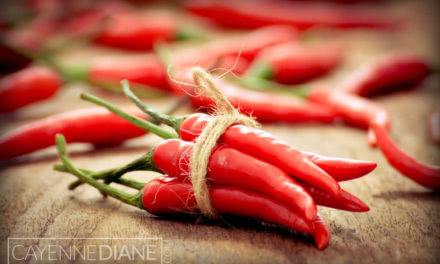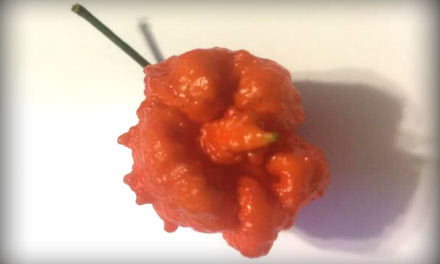As the pepper season winds down, many wonder how best to preserve their harvest. This article focus on drying peppers. If you’d like to explore additional preservation methods such as freezing or pickling, check out my How to Preserve Chile Peppers article!
Drying/dehydrating peppers is a great way to preserve your peppers. Dried peppers can last from several months to a few years if stored properly. Just note that thinner skinned peppers are better for drying. Below I offer several ways you can dry your peppers along with ideas of what do to with them once dried.
Before drying your peppers, always wash them with warm water and dry thoroughly with a towel.
Dry Smaller Peppers on a Cooling Rack
I think this is the simplest method best for small, thin-skinned red peppers like Pequin, Tabasco, Thai Peppers, and Firecracker Cayennes. The photo above is from the latest harvest from some of those plants. I dried and then coarsely ground these into some REALLY hot red pepper flakes. 🔥
Place the small whole chile peppers, single-layer, on a cooling rack placed on a baking sheet while drying so they have air circulation all around. Place them in a very dry, warm area with loads of sunlight, like under a window. These peppers can also be moved outside to bask in the sun for a bit on hot and sunny days. Really small peppers, such as Pequins, might be too small for a baking sheet and just fall right through. I’ve just placed them on a plate to dry and this works fine. Just move them around once a day.
I only dry small peppers with thin flesh this way, and I cover mine with a paper towel or tea towel just so they don’t get dusty. Be sure to rotate the peppers regularly and discard any that show signs of softness or spoilage. Within a week or two, your peppers should get dry and brittle.
Want to get fancy? String your peppers for useful kitchen decor. This also gets them up off the counter if you have limited space. You can leave hanging dried peppers up and simply pluck off what you need.
Thicker skinned peppers (like Jalapeños) have a greater chance of rotting before drying out. For these types of peppers, I’d recommend using something like a dehydrator.
Hang Peppers to Dry
If you live in a dry climate with day temperatures above 85˚F (20˚C), air-drying outdoors is a great way to dry peppers. You can also string peppers and allow them to dry inside. NOTE: moisture in the air can prevent peppers from air-drying naturally, so if you live in a humid climate, probably best to dry peppers using a dehydrator instead. This is why you’ll commonly see ristras in the southwest.
You can hang your peppers horizontally or vertically. Hanging them horizontally allows the peppers to have more airflow. I would still go with thin-walled peppers for air drying. There is a couple of ways to string peppers. You can either take a long thick needle and a very strong thread (Baker’s twine, fishing line, or a few threads of embroidery floss work) and string them together through the stems. Try to keep a little space between each pepper for airflow.
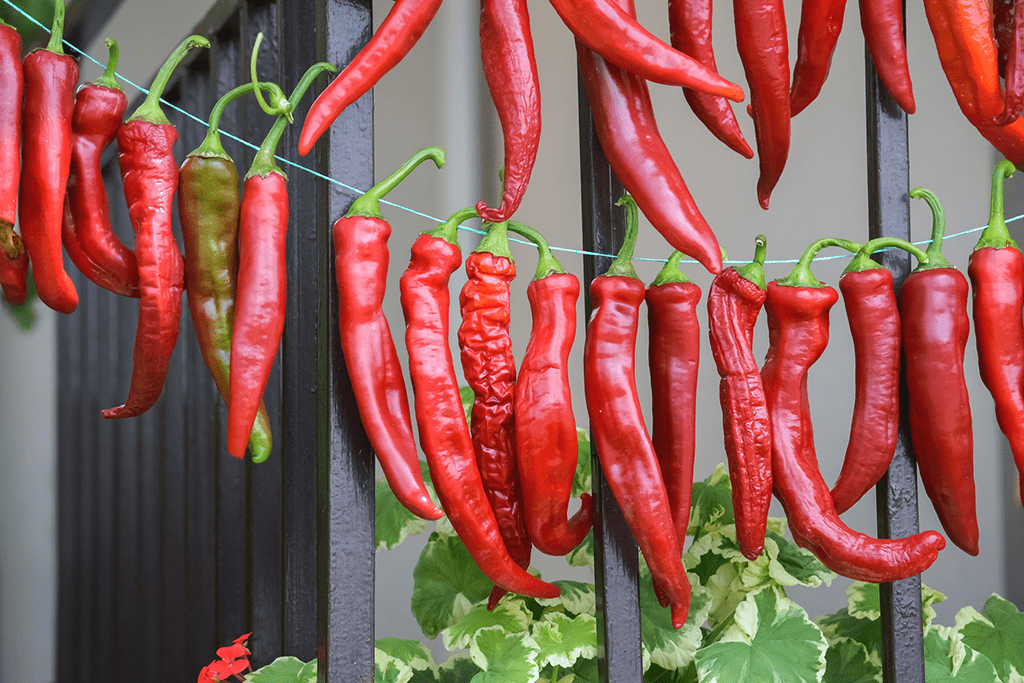
Another way to string hot peppers is to simply tie string or cooking twine around each stem and let them hang horizontally or vertically.
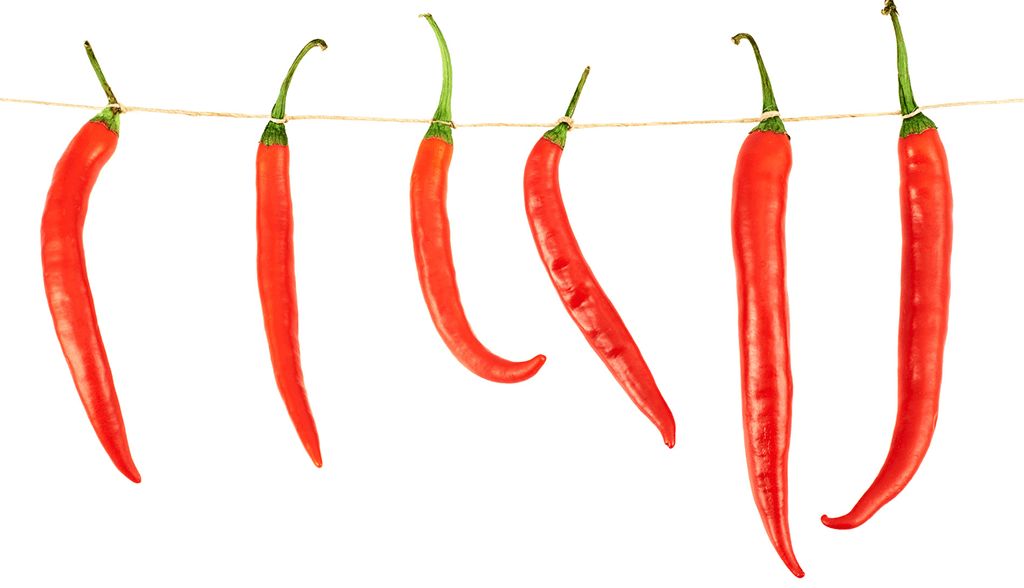
Want to get extra fancy? Try creating your very own ristra. Your ristra can be simple or complex. It’s up to you! Besides just being beautiful, ristras serve a practical purpose. This arrangement of drying chili pepper pods preserves the peppers for later use. Your ristra can be hung inside or outside to dry. Leave it hanging in the perfect spot, and pull dried peppers from your ristra as needed.
A simple ristra idea.
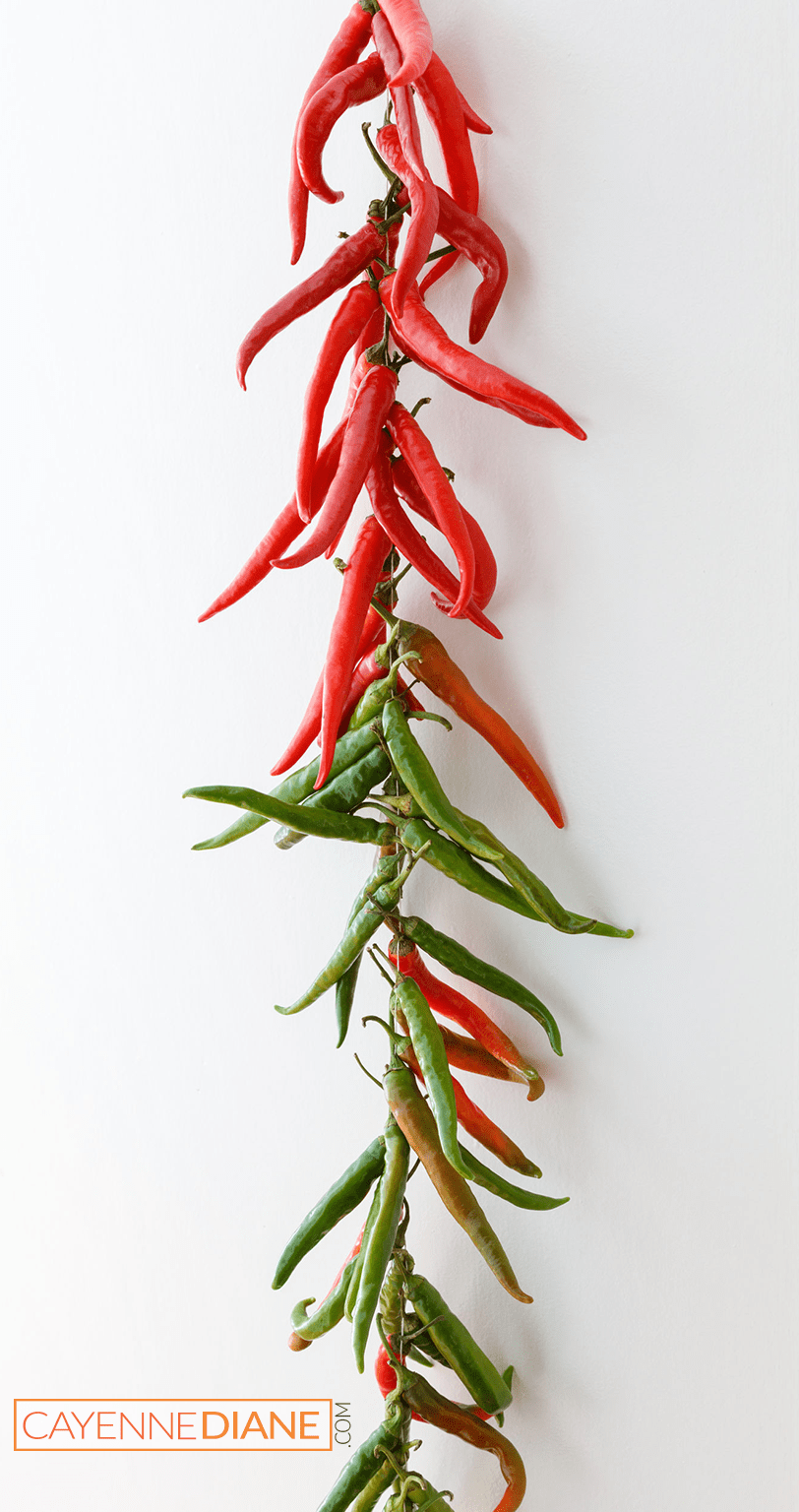
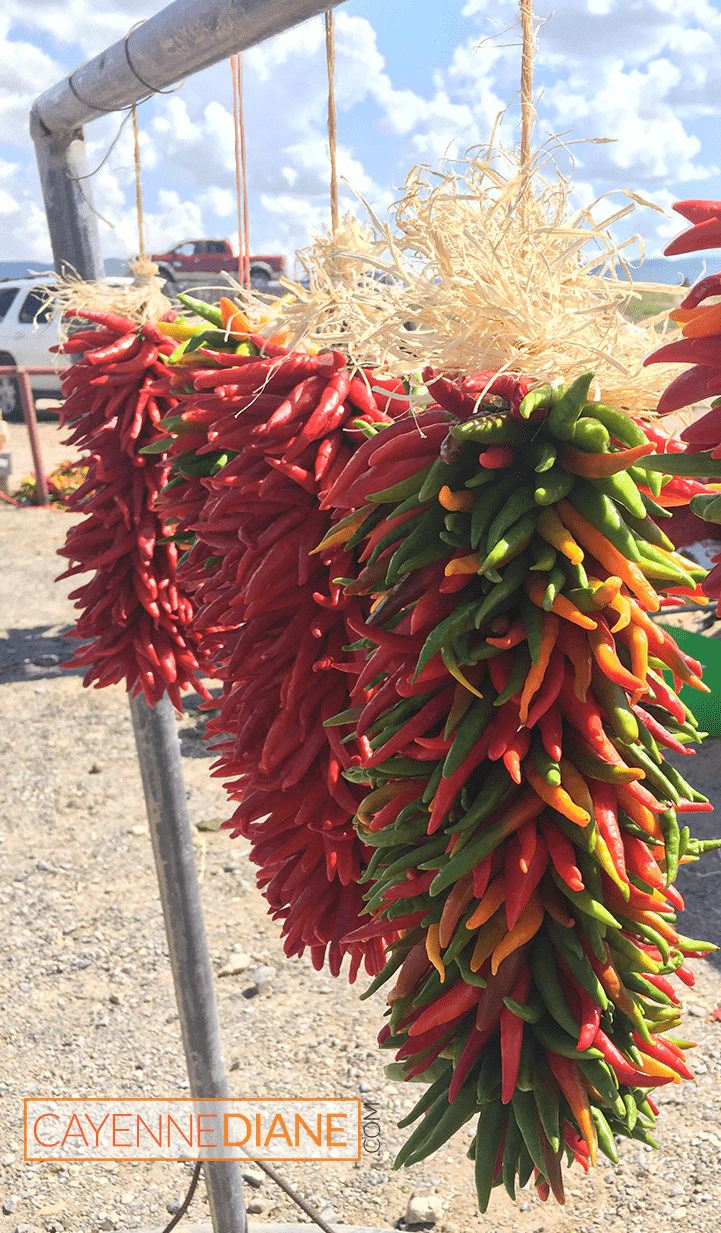
Or go all out! If you’d like to make an authentic chile ristra (typically using New Mexico chiles) here is a great how-to from Sichler Farms.
Drying Peppers in a Food Dehydrator
This is the quickest and easiest way to dry hot chile peppers if you have a food dehydrator. If your peppers are medium or large in size cut them length-wise and place them on the dehydrator’s tray with plenty of space around each piece for good airflow. Smaller peppers (1 inch or less in length) can be left whole to dry.
If your dehydrator has a temperature setting, place it between 125 and 135 degrees Fahrenheit (or per your food dehydrator instructions). Dehydrating time can take for 4 to 12 hours depending on the thickness of the peppers. Check every so often to see if the smaller or thinner pieces have dried out. Larger pepper pieces may take a few additional hours to dehydrate. The peppers are done once they become dry and brittle. Store your dehydrated peppers in glass jars away from direct light to preserve the color.
Drying Peppers in the Oven
Although I do find this the most tedious method, you can dry your peppers in the oven. The peppers may take several hours to fully dry, depending on the size. Larger, thicker-skinned peppers will take longer to dry than smaller or thin-skinned chiles. Cut thicker your peppers in half or quarters so the flesh is open and dries out faster. To allow moisture to escape, keep the oven door slightly open at least a couple of inches during the entire bake.
Place the peppers seed side up on a parchment-lined cookie sheet in a single layer. Bake at 125 degrees F for several hours, checking them about every 30 minutes. Every hour, rotate and/or flip the peppers over for even drying. Keep a very close eye on them and remove those that are well dried. Do your best to keep the peppers from burning. If you find peppers getting soft, brown-to-black, or extremely hot on the side where they touch the pan, then they’re getting cooked rather than dried, and you’re trying to avoid this. Remove those peppers and use them for something else.
My peppers are dried, now how to use them:
1. Grind into a Powder
Finely grind your dried hot peppers into a powder using a coffee/spice grinder or spice mill. I’d suggest doing this in a well-ventilated area. The fine powder can certainly cause some eye burn and coughing, depending on how hot your peppers are. I’d be very careful if grinding any kind of super hot pepper into powder. I’d suggest grinding outside. Some who work with super hots on the regular do use gas masks.
2. Coarsely grind dried peppers into chile pepper flakes.
So much hotter and more flavorful than store-bought red pepper flakes! There are several ways to coarsely grind peppers.
1) Use a coffee/spice grinder, just a couple of quick bursts. Not too much.
2) If you a more of a control freak when it comes to peppers (and there is nothing wrong with that) a mortar and pestle might be your best choice. It’s a by-hand method that gives you total control over what size you’d like your pepper flakes to be. The mortar and pestle has been used for thousands of years as a way to crush, grind, and powder herbs and dry spices.
3) No need for any fancy equipment. If your peppers are super dried out, you could also put them in a Zip-Lock bag and use a rolling pin to crush them. Press down and roll to desired consistency. Or instead of a rolling pin, you could use a mallet, meat tenderizer, or hammer to crush the peppers to your desired texture.
3. Store whole dried peppers in an airtight container
I’d recommend storing them an airtight jar or using a Food Saver to seal those babies’ airtight.

